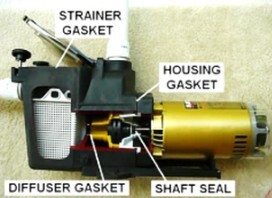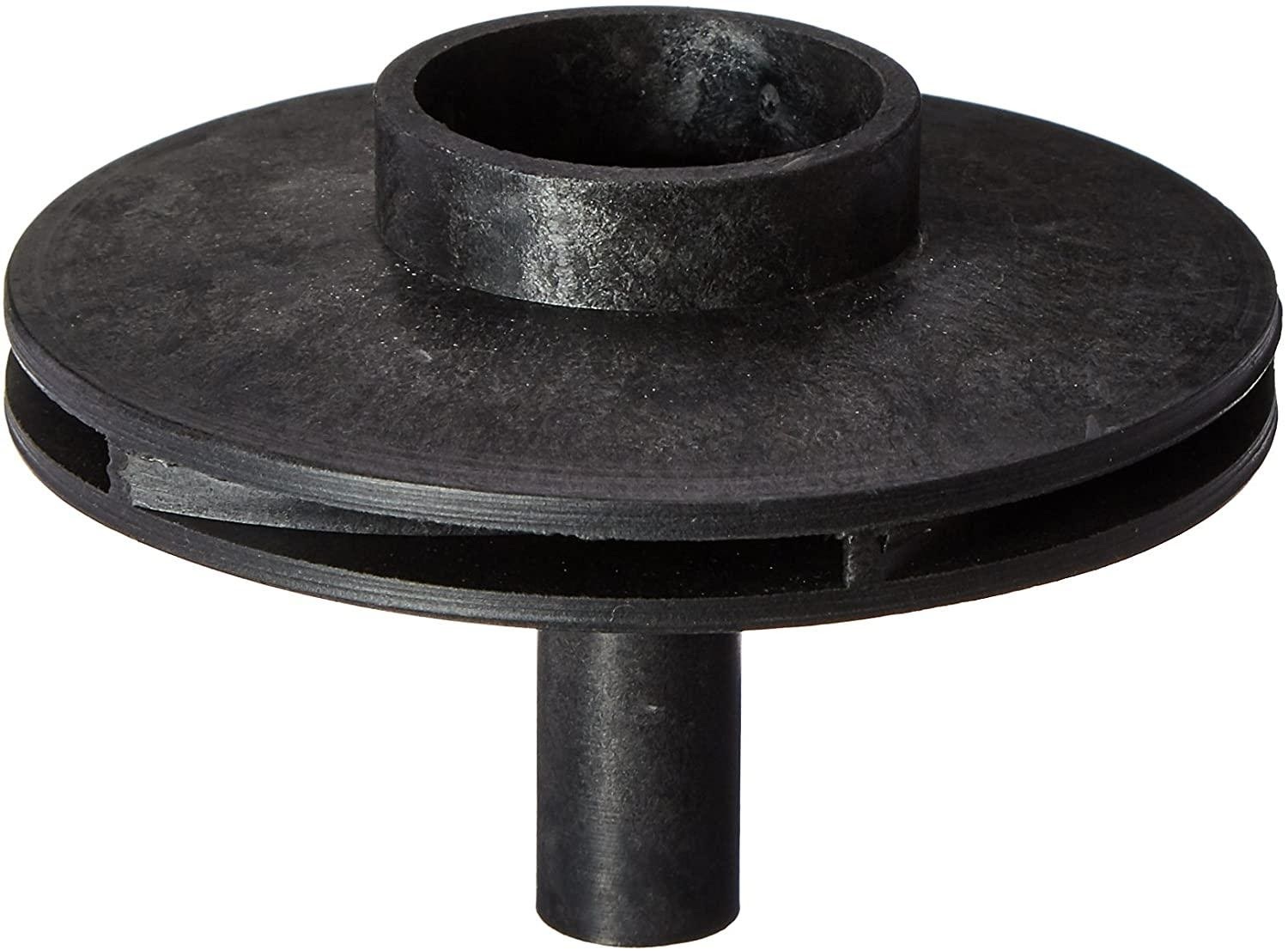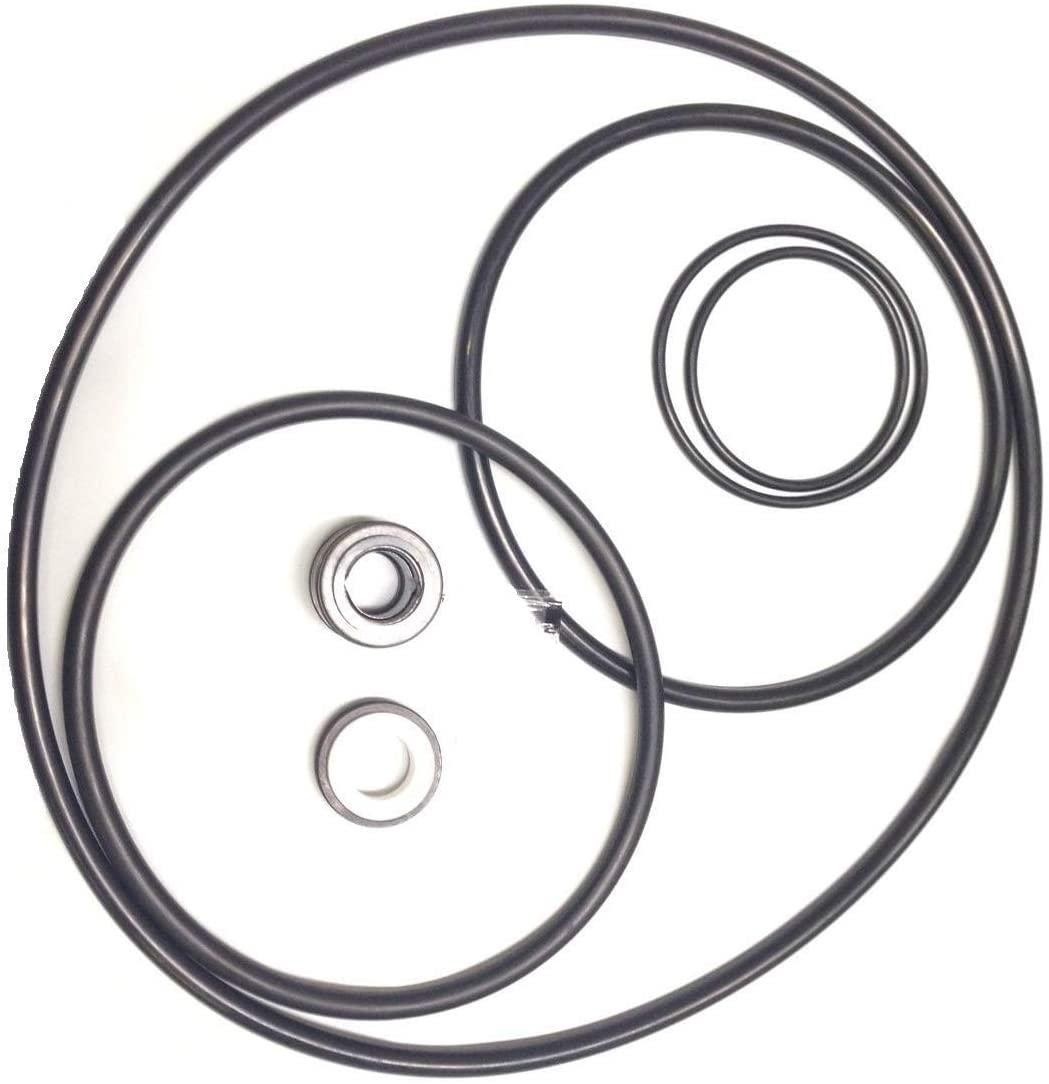The average person who swims in a pool just sees a body of water in a concrete shell––but it’s much more than that. In reality, pools are entanglements of parts that make up a system that’s distinguished from open water. The heart of that system is the pump because it helps every part work together.
Where do you even find this “pump?” Thankfully, that’s easy––it’s attached to the filter, and the drain lines flow into it. So many models with unique looks exist, but in its most basic form, the pool pump looks like this: a tall circular section with a middle oval or rectangular section that sticks out and connects to a cylinder-shaped section.
Now that you know the basic shape, here is the more detailed breakdown of a swimming pool pump. If you are doing work on your pool filter pump and need a reference, do a google search for the pool pump brand’s diagram (many pool supply stores have these somewhere on their website).
Housing

The biggest part of a pool pump is the housing. This is that circle-oval or circle-rectangle portion I mentioned earlier. Think of that as the “body” of your pump; it’s the main portion that other parts attach to. This is also where you can adjust the speed of your pump. Quite a few pools have single-speed pumps, but many pools today now have dual- or variable-speed pumps. These allow for more efficient energy use, reduce power consumption, allow for increased circulation, and reduce pump noise. You’ll know if your pool has one of these if there is a control panel.
Strainer basket and lid

The second major part of the pump is the strainer basket and lid. Those who own pools with skimmer baskets will easily recognize the pool strainer because it looks essentially the same––just smaller and encased in the pump housing. Much like the strainer baskets around the pool itself, this specific basket catches the big stuff that comes through the drain pipes so it doesn’t go into the filter. The nice thing about pump strainers is that you can look through the glass at the top and see how dirty the basket is. That way, you don’t have to constantly check it.
Gaskets and seals

After looking at these two parts, we can dive into the smaller, yet still important, parts of the pump body: gaskets and seals. These help keep the parts together and keep the pump dry. There are four major ones on a pool pump. The lid, diffuser, and housing gaskets (seal plate gasket) are all types of o-rings that provide tight seals. The final and most important seal is the shaft seal, which prevents water from getting into the motor. Likewise, the seal plate encloses this seal and attaches the pump housing to the motor.
Pool Pump Motor

This is arguably the most important part of the pump because it’s like a car engine. Without this, the pump simply doesn’t run because it’s the power source. As mentioned earlier, pumps have different speeds; the motor is what determines this. Well-designed and functional motors have ventilation openings that prevent water from getting into it. Motor manufacturers have made it easier for homeowners to know a bit more about their motor through labels that list the voltage, horsepower, Hertz rating, and voltage. In addition, they come with manuals that help you understand more about why this horsepower is important and what kind of frame your motor has if you ever need to replace a part.
Impeller

The world “impel” means “to drive or move forward.” Knowing this definition will help you remember what this little part does: pulls the water in and pushes it back into the filter. So, the motor essentially powers this little spinner so the pump does what it needs to, which is why it’s nicknamed the “water wheel.” It looks like two discs stacked on top of each other with a ring that attaches to the motor.
Diffuser

Finally, the diffuser works in tandem with the impeller by creating a vacuum seal and funneling the flow of water to the impeller so the pump stays primed. This is the back part of the motor that attaches to the skimmer basket and looks like a cone.
Take a look at your inground pool pump and filter
With all this new knowledge in mind, you’ll see your pool pump with fresh eyes. If you’re not operating your pool, this is the perfect time to take a look at what your specific pump looks like and even decide if you want to make some upgrades. If you need additional help in understanding your specific pump, don’t hesitate to call a service technician or show a picture to a manager at a local pool store.
At Sunsational Swim School, we provide highly effective private swimming lessons for customers across the US. If you’re interested in at-home swimming lessons take a look to see if we service your area and bring the swim school to your pool!
Jehn Kubiak’s bio:
Swim Instructor in Los Angeles, CA
Jehn is an aspiring aquatics manager who has lifeguarded for five years and taught swim lessons for three. Jehn has mostly taught for private swim schools, but she is also a certified American Red Cross Water Safety Instructor. Although Jehn loves teaching, she’s also a nerd about pool operations who thoroughly enjoys testing and balancing chemicals.
ABOUT SUNSATIONAL SWIM SCHOOL
Sunsational Swim School is the 🥇 #1 rated provider of private, at-home swimming lessons in America. We have specialized swim instructors for students ages 6 months to adult, beginner to advanced. Featured on ABC, CBS, Impact 100, The List and others, Sunsational instructors have a minimum of 2 years of teaching experience, are CPR certified and insured, and have collectively taught over 302,223 lessons for more than 74,415 students nationwide!



